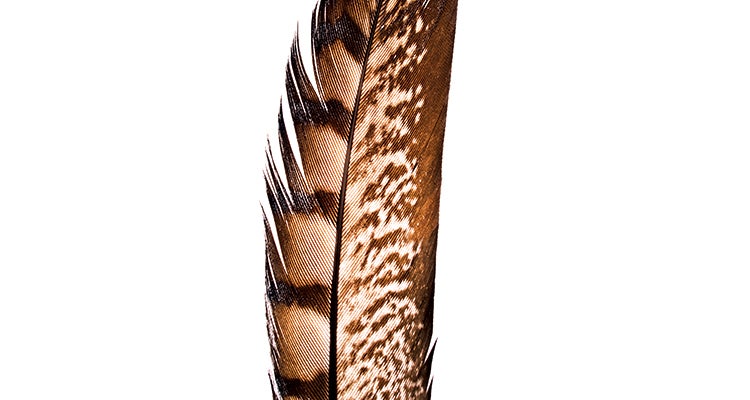Saved By: Wild Animal Survival Techniques

'Use feathers to make your arrows fly straight (photo: Andrew Bydlon)'
Don’t go thinking these wild animal survival techniques are too far-fetched to be useful. Back in the day, people used these skills to get on in every day life. Get primal with these techniques and you’ll be well on your way to coming through any survival situation–even if you have nothing but your wits and your own two hands.
Make Arrow Fletching from Feathers.
Pluck long tail feathers, split them, and affix to your primitive arrows using pine pitch (sap boiled and mixed with charcoal) or fish-skin glue. Secure them in place with paracord strands, sinew, or thread. Fletching makes arrows fly straight and true.
Use Animal Bones for Survival.
Even if an animal’s flesh is picked clean, the bones can still hold fat- and protein-dense marrow. Look for long bones, and access marrow with a rock. No marrow, no problem: Use the shards for scrapers, needles, arrowheads, or blades.
Follow Animal Tracks to Water.
Hoofstock (deer, bighorns, mountain goats, and such) usually converge near water sources.
Harvest Sinew from Small Mammals.
After you trap or club one and roast the lean meat, harvest the sinew. Remove the long ligaments found along the spine, let them dry thoroughly in the sun, and then pound them on a smooth rock (being careful not to cut them) until they’re soft. Wet and braid sinew and use it to string a bow, make snares, or tie on arrow fletching.
Navigate by Migratory Birds.
Geese and other species fly north each spring and south come fall. Take note of multiple flocks’ prevailing direction of travel and use it to establish a rough north/south bearing.
Make Fish Skin Glue.
Eat the fish first, obviously. But then save the skins and use them to make glue for basic repairs, or to hold together a water vessel. Scrape off the scales, dump the skin in a pot, and add just enough water to cover. Boil until it’s a sticky syrup. Note: It takes a while to set.
Make Tools Out of Antlers.
The primary purpose of antlers (fighting!) makes them stronger than bone. Use them as flint-knapping tools.
WARNING!
A cautionary word about carcasses: These things are backcountry buffets for bears and other scary predators, many of which will aggressively defend their dinner. Use caution. If you do find a dead animal, don’t eat the meat unless it’s stink- and maggot-free (if it’s yucky, use it for bait). Starving? You can sometimes find good enough meat by cutting away the nasty stuff. Just make sure you cook the heck out of it.